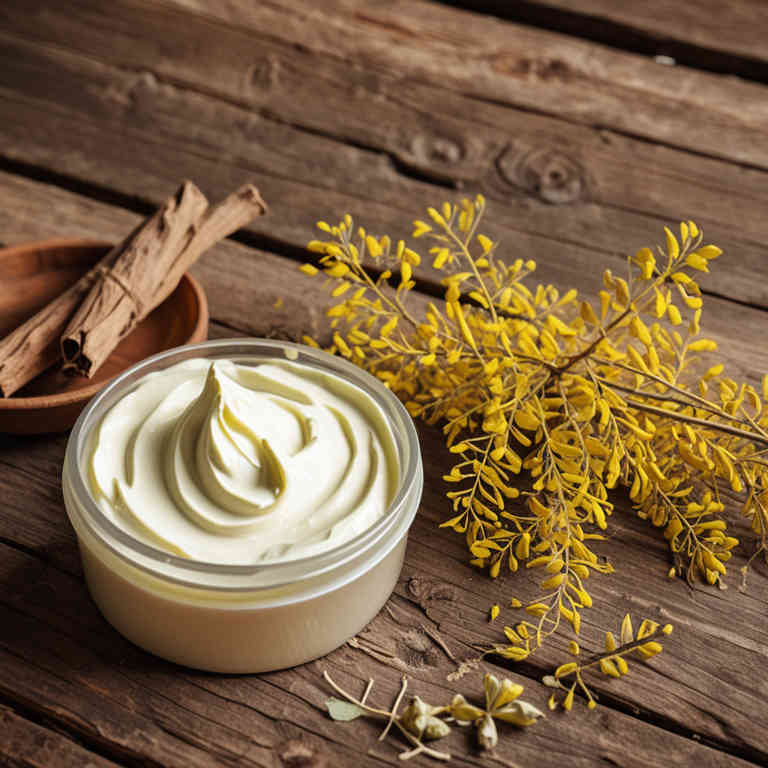Cassia auriculata cream for medicinal use

Cassia auriculata cream is a topical herbal preparation made from the flowers of the Cassia auriculata plant, commonly known as the golden shower tree.
It is traditionally used in herbalism to treat skin conditions such as eczema, psoriasis, and fungal infections due to its anti-inflammatory and antimicrobial properties. The cream is often applied directly to the affected area to soothe irritation and promote healing. It is also believed to have a calming effect on the skin and may help reduce redness and itching.
This preparation is valued in traditional medicine for its natural and holistic approach to skin care.
Uses
Cassia auriculata cream has been used to treat skin conditions and inflammatory disorders for centuries in traditional medicine systems such as Ayurveda and Unani.
Historically, it was prepared from the flowers of the Cassia auriculata plant and applied topically to alleviate symptoms of eczema, psoriasis, and other dermatological issues. In modern times, the cream has gained attention for its potential anti-inflammatory and antimicrobial properties, making it a subject of scientific research for its efficacy in treating skin infections and irritation. It is also believed to have soothing effects on the skin, helping to reduce redness and promote healing.
Today, it is used both in traditional formulations and as a complementary therapy in integrative dermatology.
Benefits
Cassia auriculata cream has health benefits such as reducing inflammation, promoting skin healing, and providing antioxidant support.
This herbal preparation is known for its soothing properties, making it effective in treating skin conditions like eczema and psoriasis. It also helps in moisturizing the skin and may alleviate symptoms of dermatitis. The cream contains natural compounds that can enhance skin regeneration and reduce redness.
Overall, Cassia auriculata cream is a traditional remedy that offers a range of therapeutic benefits for skin health.
Constituents
Cassia auriculata cream active constituents include alkaloids, flavonoids, glycosides, and tannins.
These compounds are known for their anti-inflammatory, antimicrobial, and antioxidant properties. The alkaloids may help in reducing skin irritation and promoting healing. Flavonoids contribute to the cream's ability to combat oxidative stress and support skin health.
Glycosides and tannins provide additional soothing and protective effects on the skin.
Preparation
To make Cassia auriculata cream, start by collecting fresh leaves of the Cassia auriculata plant, which are known for their anti-inflammatory and soothing properties.
Wash the leaves thoroughly and chop them into small pieces to facilitate extraction. Next, blend the chopped leaves with a small amount of water to create a pulp, then strain the mixture through a fine mesh or cheesecloth to remove solid particles. Once you have the liquid extract, mix it with a base of coconut oil or another carrier oil to achieve a creamy consistency.
Finally, store the cream in a clean, airtight container and apply it topically to the affected area as needed for relief.
Side Effects
Cassia auriculata cream may lead to skin irritation or allergic reactions in some individuals due to its active compounds.
It is commonly used for its anti-inflammatory and antimicrobial properties, making it popular in traditional medicine. However, prolonged use could result in skin sensitivity or dryness. Some people might experience redness, itching, or a burning sensation upon application.
It is important to consult a healthcare professional before using this preparation, especially for those with existing skin conditions or allergies.